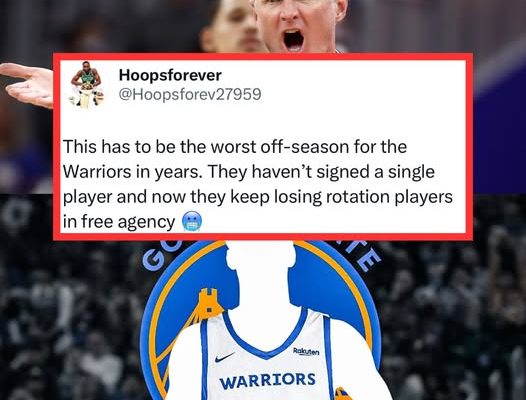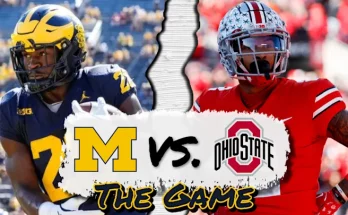The Golden State Warriors, a franchise synonymous with championship success and revolutionary basketball over the past decade, currently find themselves at a crossroads. Despite their historic dominance and high expectations every season, the team has yet to make any significant roster moves in the ongoing offseason. Compounding concerns among fans and analysts alike is the recent loss of another rotation player, which has left questions about the team’s depth and strategic direction heading into the new campaign.
This situation is particularly striking given the Warriors’ track record. For years, they set the benchmark for building and maintaining a championship-caliber roster. Their success was built on a combination of superstar talent, excellent role players, and shrewd front-office maneuvers. Whether it was the drafting of Stephen Curry and Klay Thompson, or the timely acquisition of Kevin Durant and Andre Iguodala, Golden State’s front office demonstrated a keen ability to adapt and improve their roster. However, this offseason has been unusually quiet from that perspective.
Losing a rotation player at this stage is significant for the Warriors because it chips away at a roster that was already in flux. Rotation players are critical, especially for a team that relies heavily on depth to maintain its high-tempo and sharpshooting style. These players are often the glue guys who contribute defensively, bring energy off the bench, and provide quality minutes that allow the stars to rest without the team’s performance dipping drastically. The loss of any such player creates a gap that can affect the flow and balance of the team.
The identity of the departed player may not be a household name, but their role in the rotation was nonetheless meaningful. Rotation players typically carry responsibilities like guarding multiple positions, facilitating ball movement, or hitting timely shots. When a team loses such a contributor, it is forced to reconsider how minutes will be allocated and who will step up in their absence. For the Warriors, known for their precision and chemistry, this disruption could lead to a larger ripple effect if not addressed properly.
What makes the situation more puzzling is the lack of proactive moves by Golden State’s front office. While many teams have already made aggressive signings, trades, or re-signings, the Warriors appear to be taking a more cautious approach. This could stem from several factors. Salary cap constraints, prioritizing internal development of young players, or waiting for the right deal could all be reasons behind the current inactivity. Nonetheless, the absence of any tangible roster upgrades combined with the loss of a rotation player has put the Warriors under increased scrutiny.
The Warriors’ core—Stephen Curry, Klay Thompson, and Draymond Green—remains intact, and those three players still define the team’s playing style and identity. However, as the NBA evolves, teams with deeper benches and versatile players have been gaining ground. The league-wide trend toward positionless basketball and multi-skilled role players means that depth can often decide playoff outcomes as much as star power. Without timely reinforcements, the Warriors risk being outpaced by teams with deeper, more flexible rotations.
Another aspect to consider is the physical health and durability of the Warriors’ stars. Over the past few seasons, injuries have been a challenge, especially for Klay Thompson and Draymond Green. While they have battled back, the wear and tear of their playing style means that having dependable bench players ready to absorb minutes is critical. Losing a rotation player reduces that safety net and increases pressure on the main stars, potentially shortening their effectiveness over a long, grueling season.
The coaching staff, led by Steve Kerr, will now have to adapt their strategies to this new reality. Kerr is known for his ability to maximize talent and get the most out of his roster, but even the most skilled coaching mind cannot fully compensate for a lack of personnel. The challenge will be balancing minutes, managing player health, and maintaining team chemistry despite a thinner bench. This will test the Warriors’ resilience and creativity on both ends of the floor.
Meanwhile, fans and media have expressed growing impatience over the Warriors’ apparent inactivity. The expectation for a team with championship aspirations is to be aggressive in the offseason, particularly when the competitive window is still open. Other contenders have been active in acquiring talent and shoring up weaknesses, signaling their readiness to challenge Golden State’s supremacy. The Warriors’ reluctance—or inability—to follow suit leaves them vulnerable to being leapfrogged in the Western Conference pecking order.
There is also the question of how this situation will impact the development of younger players on the roster. Golden State has a history of successfully integrating young talent alongside their veterans, allowing players to grow into significant roles. With fewer veteran rotation players, the burden on the younger players increases. This could be a double-edged sword; on one hand, it presents a valuable opportunity for growth and experience, but on the other hand, it may expose them prematurely to high-pressure situations they are not fully prepared for.
Financial considerations cannot be overlooked. The Warriors have a significant payroll committed to their stars and key contributors, which naturally limits their flexibility in free agency. This has been a recurring challenge for the franchise, forcing them to be selective and strategic in their signings and trades. The timing of moves and the type of contracts offered will be crucial as they attempt to improve their roster without compromising future flexibility.
Some analysts suggest that the Warriors might be waiting for the trade market to develop further before making a move. In many cases, trades involving rotation players or role players happen closer to the start of training camp or even into the season, as teams reassess their needs and injuries arise. However, this carries risks as the team begins the season without a full complement of players, which could lead to early struggles and a tough battle for playoff positioning.
It is also possible that the Warriors are putting faith in their established system and the leadership of their core players to carry them through another season. The confidence in Curry, Thompson, and Green’s ability to compete at a high level, combined with the coaching staff’s expertise, might be leading the front office to take a wait-and-see approach. History has shown that when healthy, this trio can still compete with the best in the league, but longevity and consistency will be key factors.
The loss of a rotation player also puts a spotlight on the importance of health and conditioning in modern basketball. Teams now emphasize not only talent but also the durability and availability of players throughout the long NBA season. Golden State’s challenge will be to find players who can stay on the court and contribute consistently. This focus may influence their future personnel decisions as they navigate the remainder of the offseason and into the regular season.
Looking ahead, the Warriors’ offseason trajectory remains uncertain. Without a clear path to adding depth and addressing the gaps caused by the recent player loss, the team risks starting the season with vulnerabilities. This could affect their ability to contend for the top seed in the West and ultimately for another championship. The NBA landscape is fiercely competitive, and even small missteps in roster management can have outsized consequences.



